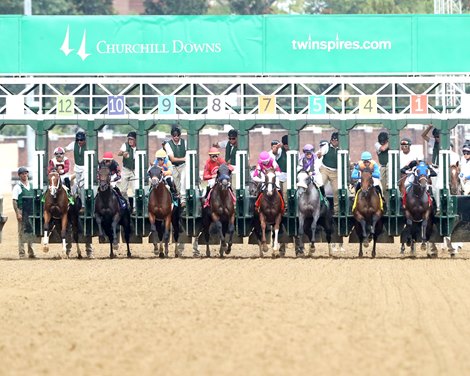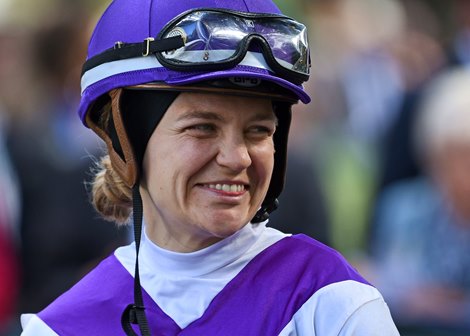Which is more important: another hour of sleep or a morning workout?

It’s January, and towards the top of your list of resolutions might be something along the lines of: sleep more and work out more. Hey, both are pretty dang important. But let’s say you got a rough night of sleep last night and are now faced with a dilemma: to get out of bed and go work out…or to silence your alarm and enjoy an extra hour of sleep?
At the end of the day, the decision is highly personal—it comes down to your own health goals, schedule, and priorities. But research indicates that exercise can actually help curb some of the negative physiological effects of a bad night’s sleep. Interestingly, as Rhonda Patrick, PhD, a biomedical scientist and researcher focused on the intersection of sleep, exercise, and metabolic health, shared on Instagram, a single four-hour night of sleep can lead to negative short-term physiological effects in healthy people—but high-intensity interval training (HIIT) may help counteract some of those effects.
But while trading an hour of sleep for an hour of exercise can sometimes have a positive effect, sacrificing rest to maintain your strength and physique is not a sustainable long-term solution. So, how do you navigate this tricky balancing act?
Ahead, doctors and fitness experts break down the science of how exercise can offset the effects of short-term sleep deprivation, how to identify when it makes sense to prioritise movement over snoozing, and share practical tips for prioritising both rest and fitness.
Meet the experts: Alexander Rothstein, CSCS, ACSM-EP, is an exercise physiologist and instructor for the exercise science programme at New York Institute of Technology. Navya Mysore, MD, is a physician, medical director of the Nurx app, and Women’s Health medical advisory board member.
To snooze or to sweat? here’s what the science saysThere are tons of recovery tools out there to help your muscles recoup after a tough workout, but sleep trumps them all. Acting as your body’s ultimate recovery tool, sleep is when the bulk of essential physiological processes occur, including muscle repair, hormone regulation, neurological repair—you name it—keeping your energy and mood in check, says Alexander Rothstein, EdD, CSCS, an exercise physiologist, strength coach, and educator.
During deep sleep, growth hormone production peaks, repairing muscle tissue damaged during exercise. At the same time, stress hormones like cortisol are balanced, and blood sugar levels are regulated. Skipping even one night of quality rest can disrupt these processes, potentially leading to fatigue and impaired recovery.
Chronic sleep deprivation can have an even bigger impact. A 2023 systematic review in Cureus linked poor sleep to increased cortisol levels, which can trigger insulin resistance and raise blood sugar—a precursor to type 2 diabetes. ‘We see a pattern where individuals demonstrate compromised physiological function without adequate sleep and recovery,’ says Rothstein, underscoring that sleep is essential for maintaining the health of all bodily systems.
But exercise can help offset some of the negative effects of insufficient sleep. HIIT improved cardiovascular function even after a night of partial sleep deprivation, a 2020 study in the European Journal of Applied Physiology found. In the study, 15 healthy men alternated between well-rested and sleep-deprived conditions with or without exercise. The results showed that exercise boosted cardiovascular health regardless of sleep quality, suggesting that getting active after a rough night can still benefit your heart.
Exercise also supports your brain and mood when sleep falls short. A 2023 study in Health Nexus explored how low-intensity aerobic exercise, like a brisk walk or light jog, impacted 21 female volleyball players after partial sleep deprivation. While their reaction times and motor responses were slower after a bad night of sleep, the exercise improved focus and mood.
So, the occasional trade-off of an hour of sleep for a workout might be okay. But doing so all the time isn’t sustainable. Chronic sleep deprivation paired with regular physical activity can lead to fatigue, stress, and mood swings—undermining the benefits of both sleep and exercise. So, while exercise can help soften the blow of a bad night’s sleep, consistent, high-quality rest is non-negotiable for long-term overall health.
When it’s okay to trade sleep for a workout
‘The body is incredibly adaptive and resilient, but it has limits,’ Rothstein says. ‘Sacrificing sleep in order to make time for exercise is a plausible solution that can help improve health and fitness, but it needs to be carefully balanced with managing proper sleep and recovery within one’s lifestyle.’ He suggests pushing through the workout after a night of poor sleep sparingly—perhaps once per week—while prioritising sleep on other days to allow your body to fully recover.
‘Finding the best time to work out can be like a Tetris game of when you can actually fit it in,’ says Navya Mysore, MD, physician and Women’s Health medical advisory board member. Try fitting in a HIIT workout on a day you feel a little tired, and see if it helps you feel more energised. Listening to your body is key to determining what works best for you.
When sleep should come first
More times than not, sleep should trump all. ‘I always come back to trying to have a solid night of sleep,’ says Dr Mysore, who recommends seven to nine hours per night, though she acknowledges this can be challenging. Consistent lack of sleep not only disrupts cognitive function, but also impairs physical performance and can even contribute to hypertension, obesity, increased risk of diabetes, anxiety and depression.
So, how do you know when to hit the hay instead of the gym? ‘Whenever you are feeling physically and/or mentally run down,’ says Rothstein. This includes signs of burnout, illness, or overtraining. He recommends adding extra rest whenever possible to help prevent setbacks. Listening to your body and prioritising recovery will ultimately support your fitness goals.
Here are some tips to get better sleep
- Try winding down earlier
- Be consistent with what time you go to bed and wake up
- Eliminate screen time at least an hour before bed
- Dim the lights around you to support your body’s natural circadian rhythm
- Create a calming pre-sleep routine to cue your body that it’s time for sleep
How to nail the balancing act
Life is complicated and we’re all only human. Despite our best efforts, getting seven to nine hours of sleep and squeezing in a workout a few times per week can be a challenge. It might not always be feasible, but here are some expert tips to help:
- Sacrifice sleep to exercise on occasion, not daily. This allows the body to get both an increased amount of sleep on non-exercise days and gets more exercise stimulus on exercise days.
- Listen to your body. ‘At times you begin to feel more burnt out, you can consider getting more sleep instead of exercise,’ Rothstein says. When you’re feeling healthy and up to moving your body even if you’re groggy after a bad night, ‘you can integrate exercise.’
- Plan ahead. On a Sunday, try to block off time in your week for when you can squeeze in a workout. ‘Try to find the space for it when it makes sense so it’s convenient,’ Dr Mysore says. Whether it’s right after dropping off your kids or during your lunch break, this gives you the best chance of making it work.
- See how it feels. ‘Try not to have an all or nothing mindset,’ Dr Mysore says. She recommends trying a workout once or twice after a short night of sleep and then assessing how you feel afterwards. Did it energise you? Drain you more? If it feels more helpful than harmful, it might be a viable tool for you as needed.
- Be flexible. ‘Give yourself permission to adapt your plans as needed,’ she says. If you wake up to your alarm and your body is just not feeling good, that extra hour of sleep might be better for you than moving your body. It’s ok to adjust the plan according to how you feel.
- Think: teamwork. Whether it’s a partner or another support system, communicate that making time for your workout is important and work as a team to make sure you get your sweat session in while all other responsibilities are taken care of.
More fitness stories
Cut through the noise and get practical, expert advice, home workouts, easy nutrition and more direct to your inbox. Sign up to the WOMEN’S HEALTH NEWSLETTER
Rachel Tavel is a doctor of physical therapy, strength and conditioning specialist certified by the National Strength and Conditioning Association, and writer. Her writing has been published in Forbes, Fortune, Men’s Health, Women’s Health, Runner’s World, SELF, Bicycling Magazine, The Huffington Post, and more. She co-authored the book “Stretch Yourself Healthy Guide: Easy Routines to Relieve Pain, Boost Energy, and Feel Refreshed” (Prevention, 2020) and is a Forbes Health Advisory Board Member. Prior to becoming a physical therapist, Rachel was a travel writer living and traveling throughout South America. Connect: , , Email: .
Related
The Edge Fitness Clubs Strengthens Offerings in 2025 with Revolutionary…
Fresh New Offering Combines HYROX Training, Les Mills Ceremony and Cutting-Edge Techniques ORA
Xponential Fitness Bolsters Leadership Team with Four Key Executive Appointments…
Xponential Fitness (NYSE: XPOF) has announced four key executive appointments to stre
Xponential Fitness Announces Executive Leadership Appointments
IRVINE, Calif., January 15, 2025--(BUSINESS WIRE)--Xponential Fitness, Inc. (NYSE: XPOF) (the "Company" or "Xponential Fitness"), one of the leading glo
Is walking or cycling better for weight loss? Here’s what…
Walking has had quite a year, between the rise of the viral hot girl walking trend on social media and walking accessories like bala bangles and weighted vests











